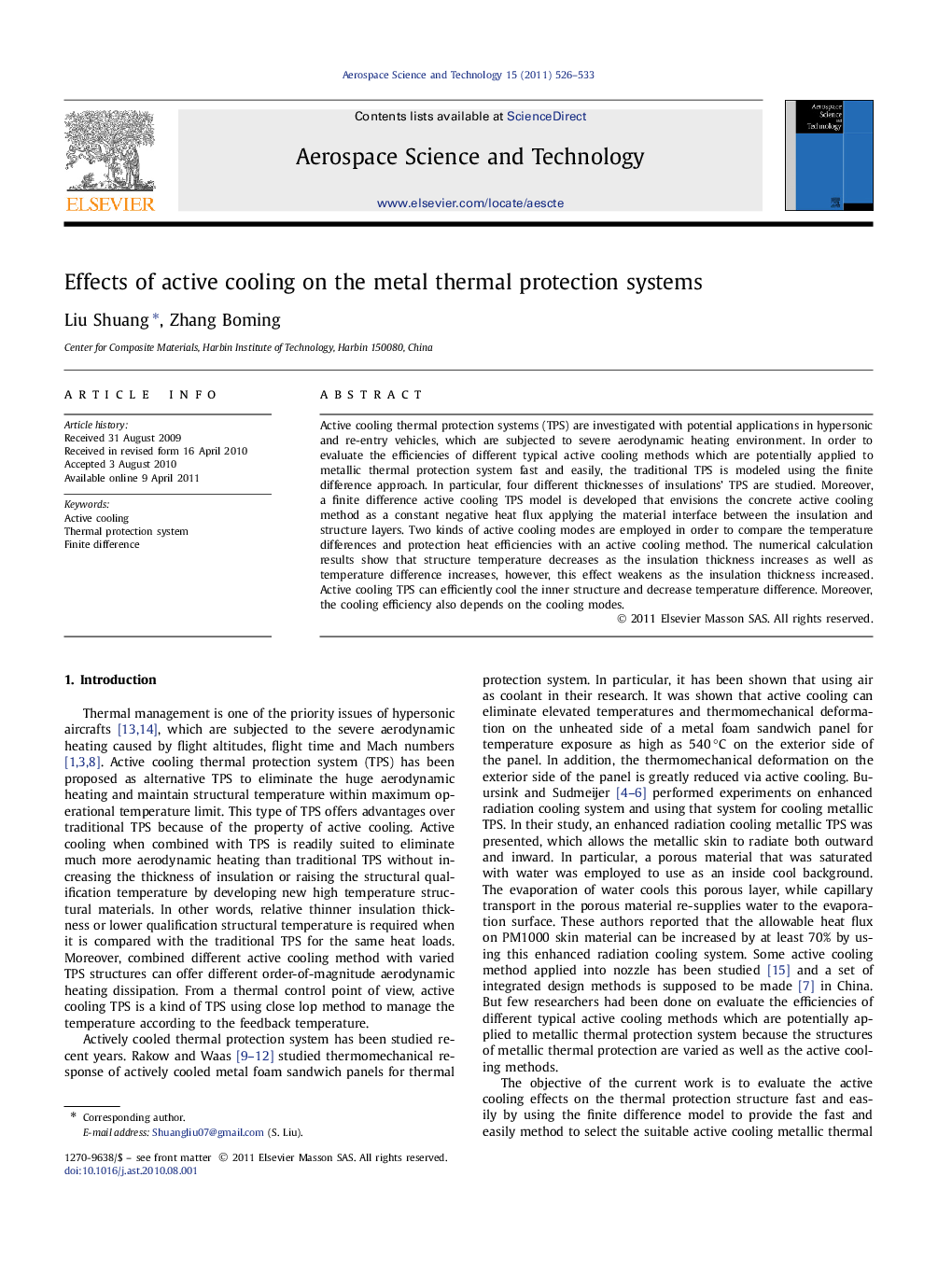| Article ID | Journal | Published Year | Pages | File Type |
|---|---|---|---|---|
| 1718463 | Aerospace Science and Technology | 2011 | 8 Pages |
Active cooling thermal protection systems (TPS) are investigated with potential applications in hypersonic and re-entry vehicles, which are subjected to severe aerodynamic heating environment. In order to evaluate the efficiencies of different typical active cooling methods which are potentially applied to metallic thermal protection system fast and easily, the traditional TPS is modeled using the finite difference approach. In particular, four different thicknesses of insulationsʼ TPS are studied. Moreover, a finite difference active cooling TPS model is developed that envisions the concrete active cooling method as a constant negative heat flux applying the material interface between the insulation and structure layers. Two kinds of active cooling modes are employed in order to compare the temperature differences and protection heat efficiencies with an active cooling method. The numerical calculation results show that structure temperature decreases as the insulation thickness increases as well as temperature difference increases, however, this effect weakens as the insulation thickness increased. Active cooling TPS can efficiently cool the inner structure and decrease temperature difference. Moreover, the cooling efficiency also depends on the cooling modes.
